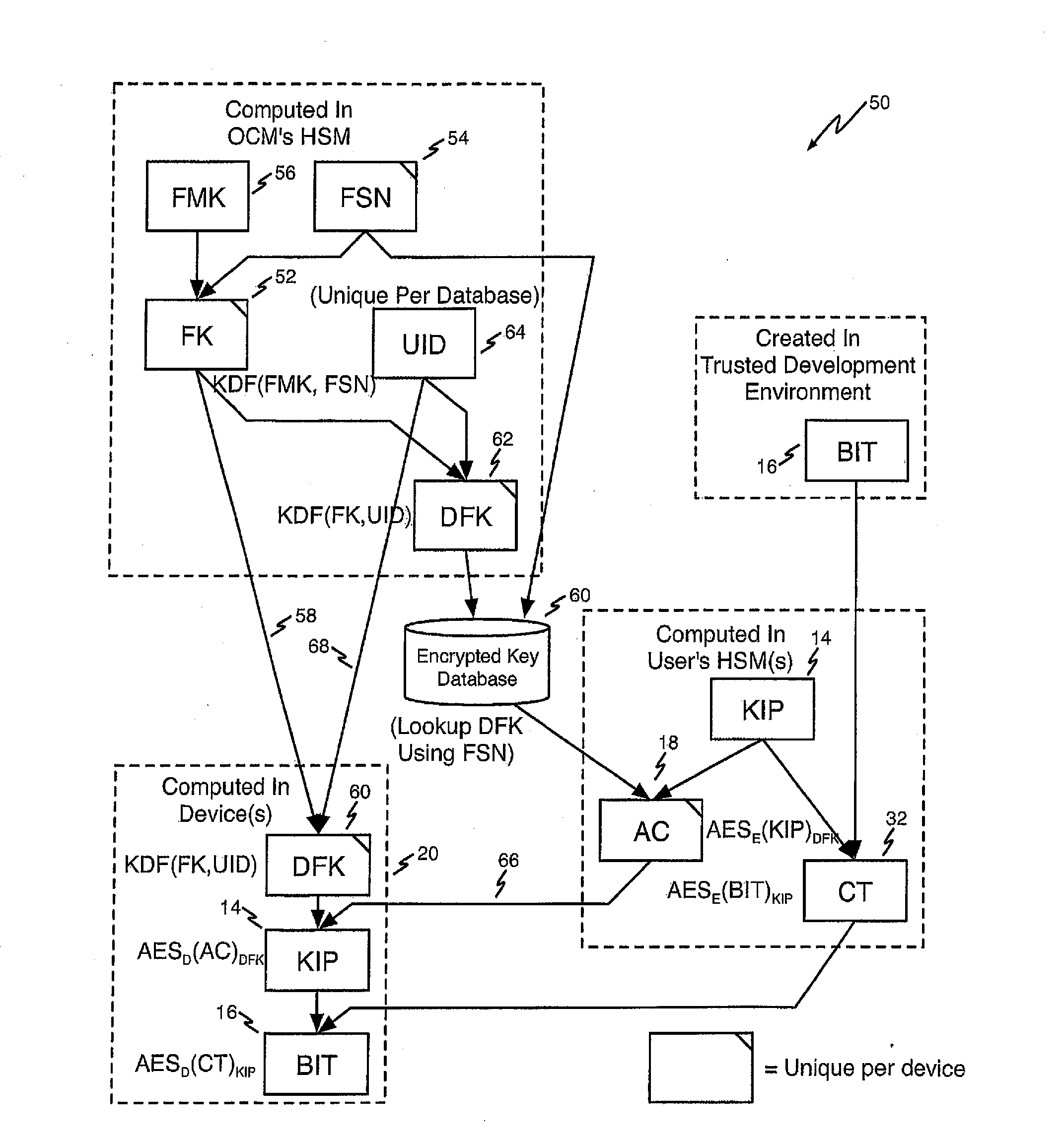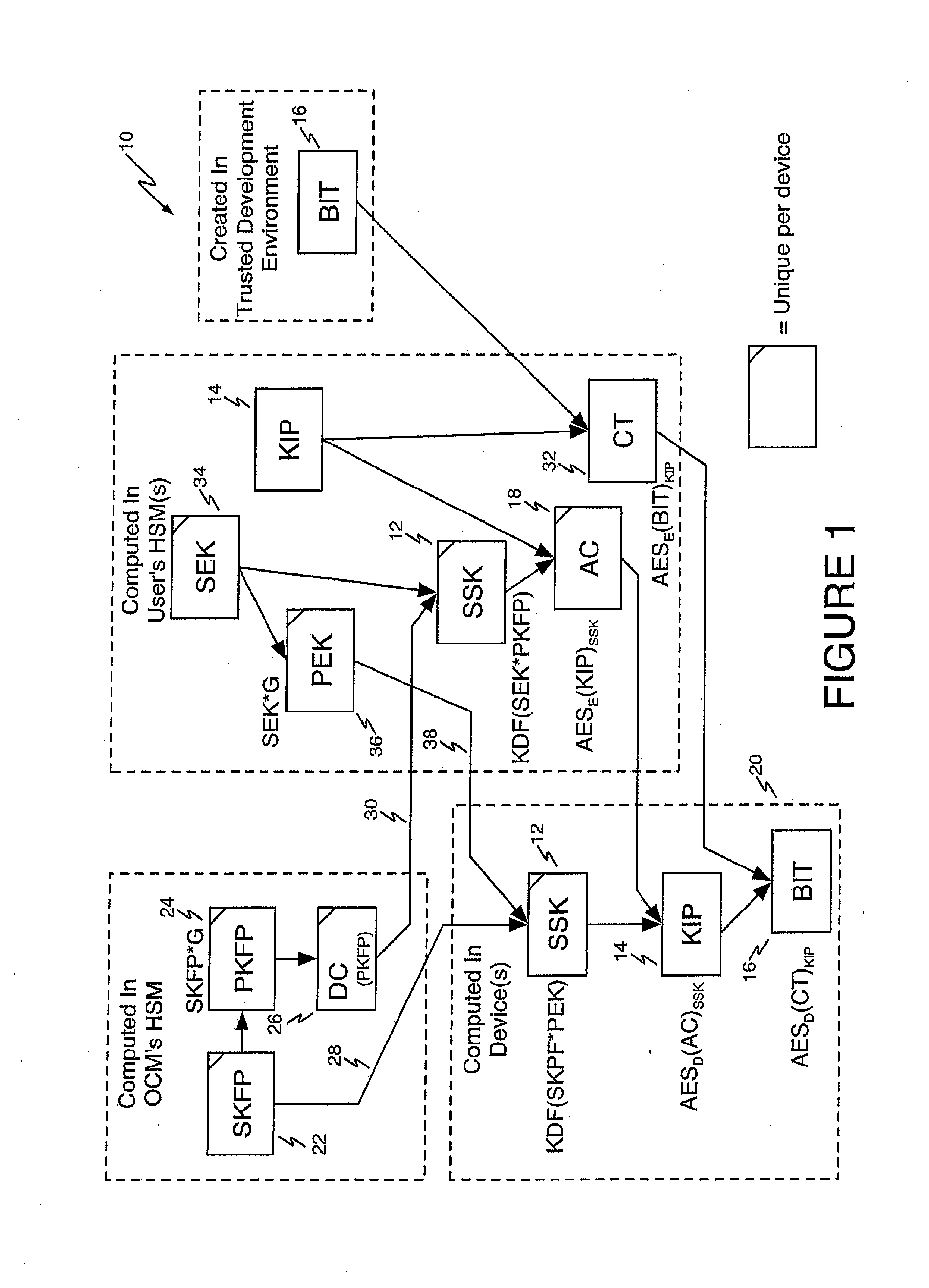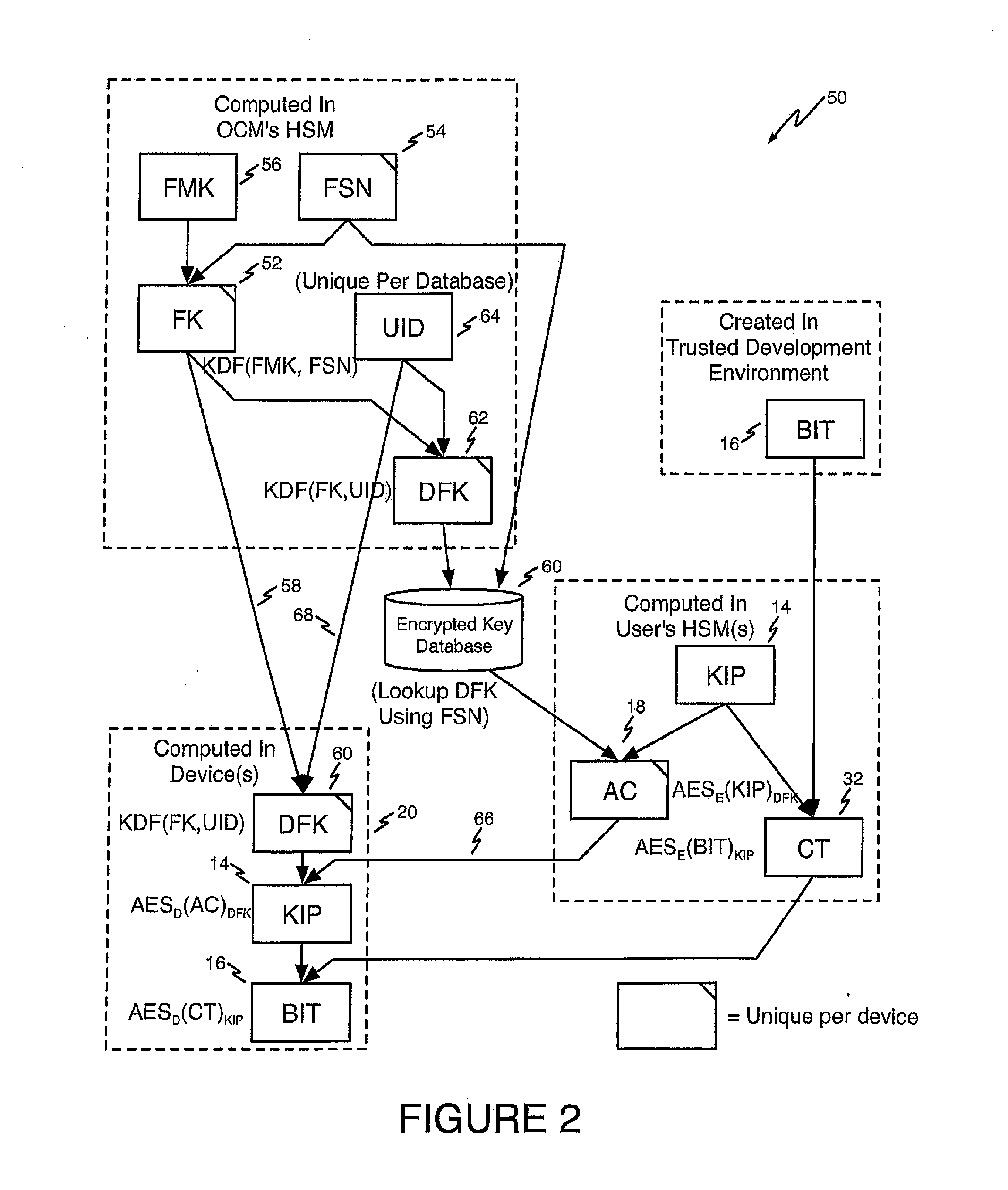Method of Improving FPGA Security Using Authorization Codes
a security and authorization code technology, applied in the direction of unauthorized memory use protection, instruments, cad circuit design, etc., can solve the problems of cloning and overbuilding, too easy for anyone to monitor the bitstream during loading and then make copies, and achieve the security of bitstream encryption and authentication. , the effect of improving the window of opportunity for an attacker
- Summary
- Abstract
- Description
- Claims
- Application Information
AI Technical Summary
Benefits of technology
Problems solved by technology
Method used
Image
Examples
Embodiment Construction
[0019]Persons of ordinary skill in the art will realize that the following description of the present invention is illustrative only and not in any way limiting. Other embodiments of the invention will readily suggest themselves to such skilled persons.
[0020]Referring first to FIG. 1, a block diagram shows an illustrative asymmetric Authorization Code cryptography method 10 according to one aspect of the present invention.
[0021]The illustrative embodiment of the invention that is shown in FIG. 1 uses public key (asymmetric) cryptographic methods to establish a shared (symmetric) secret key SSK shown at reference numeral 12, known to both the IP owner and the FPGA device. This is an ephemeral key that is unique to a single device. Thus, technically this is a hybrid symmetric / asymmetric method. However, for ease of description, this method will be referred to as an asymmetric method. In brief, the shared secret key is used to create the ephemeral Authorization Code, which transports i...
PUM
 Login to View More
Login to View More Abstract
Description
Claims
Application Information
 Login to View More
Login to View More - R&D
- Intellectual Property
- Life Sciences
- Materials
- Tech Scout
- Unparalleled Data Quality
- Higher Quality Content
- 60% Fewer Hallucinations
Browse by: Latest US Patents, China's latest patents, Technical Efficacy Thesaurus, Application Domain, Technology Topic, Popular Technical Reports.
© 2025 PatSnap. All rights reserved.Legal|Privacy policy|Modern Slavery Act Transparency Statement|Sitemap|About US| Contact US: help@patsnap.com



